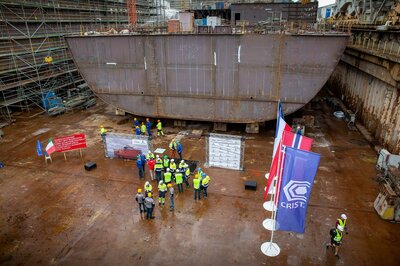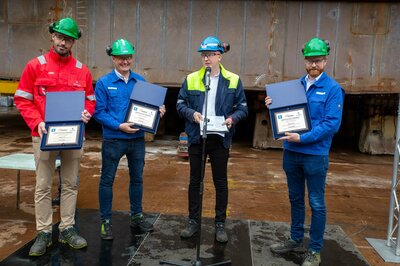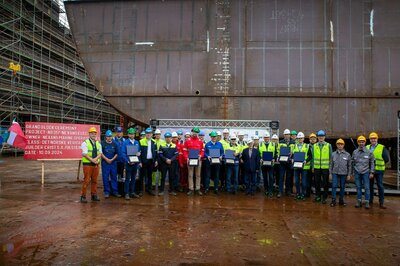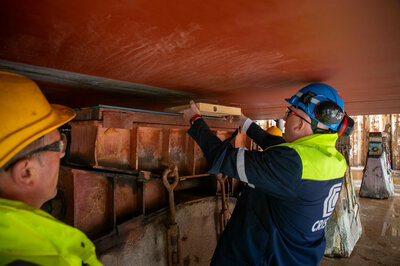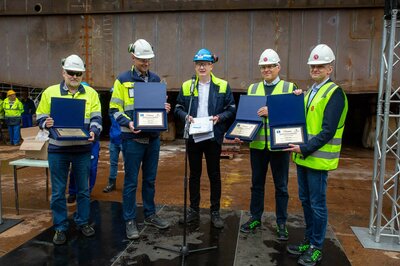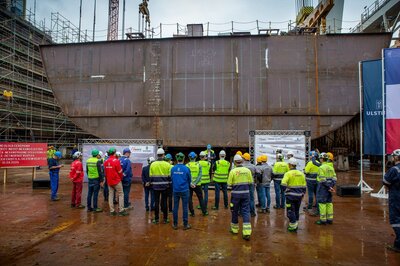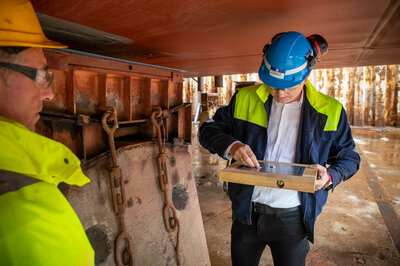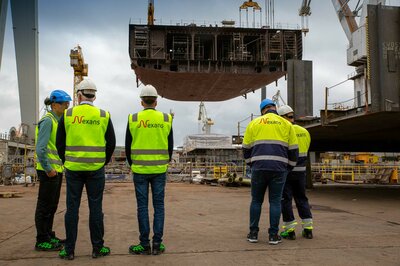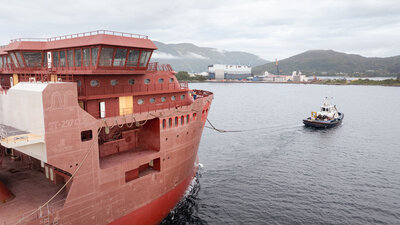Representatives from the owner, shipbuilders, ship designers, and other partnering companies attended the ceremony. The design is a collaborative effort drawing on the combined expertise of Nexans, Skipsteknisk, Ulstein Verft, and NOV, all leaders in designing, constructing, supplying or operating these types of advanced installation vessels.
"The grand block ceremony for the Nexans Electra brings us closer than ever to achieving our goal of sustainably electrifying the world. We are looking ahead in anticipation at the day when the Electra is in the water, delivering cables that drive the energy transition forward", says Pascal Radue, EVP of Nexans Generation and Transmission Business Group.
Lars Lühr Olsen, Managing Director at Ulstein Verft, added, “The vessel is well-prepared for installing complex cable connections in severe weather conditions worldwide. Ulstein Verft will handle the final outfitting, commissioning, and testing before the vessel’s delivery in 2026. We are well-prepared and eager to complete this newbuild project for Nexans.”
Global energy operations
The Nexans Electra represents a significant step forward in offshore renewables and embodies over a century of Nexans’ experience in submarine cable installation, advancing cable installation in terms of capacity and capability.
Based on an ST-297 CLV design by Skipsteknisk, the vessel is an updated version of the sister vessel Nexans Aurora, delivered in 2021. She is specially designed to transport and lay high-voltage subsea cables, including cable bundles, recovery, and repair. She can perform effectively in challenging weather conditions and has exceptional characteristics in manoeuvrability and station-keeping.
This cutting-edge DP3 cable-laying vessel features a split turntable on deck capable of holding up to 10,000t of cable, an under-deck turntable with a 3,500t cable capacity, and a fibre optic tank holding 450t fibre cable.
The vessel will play a vital role in installing Nexans’ cutting-edge HV submarine cables, which secure connections worldwide. This includes connecting offshore wind farms to the grid and creating power connections between islands and the mainland.

